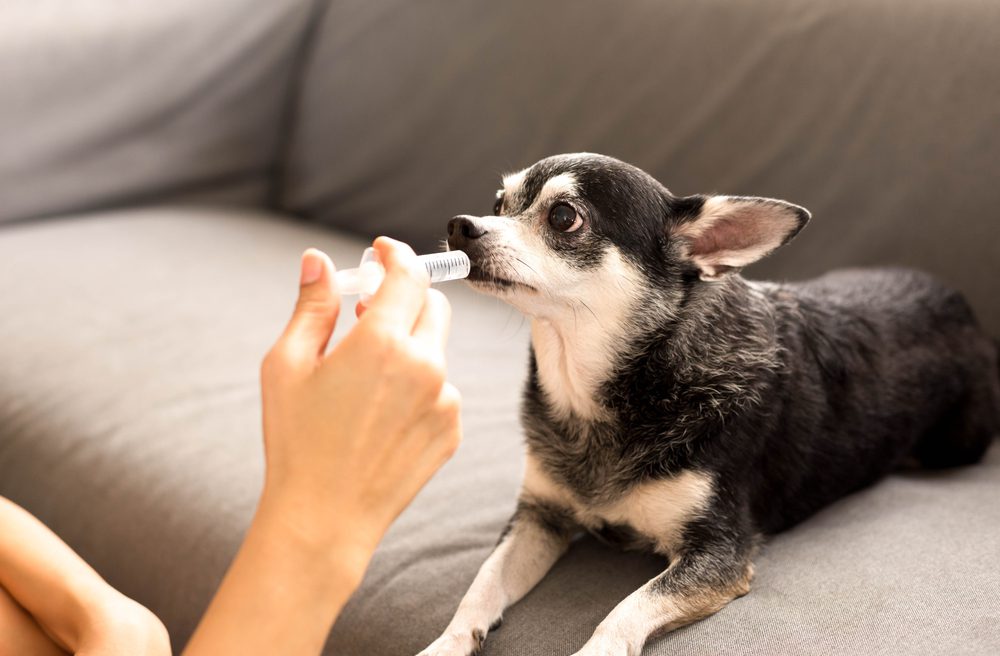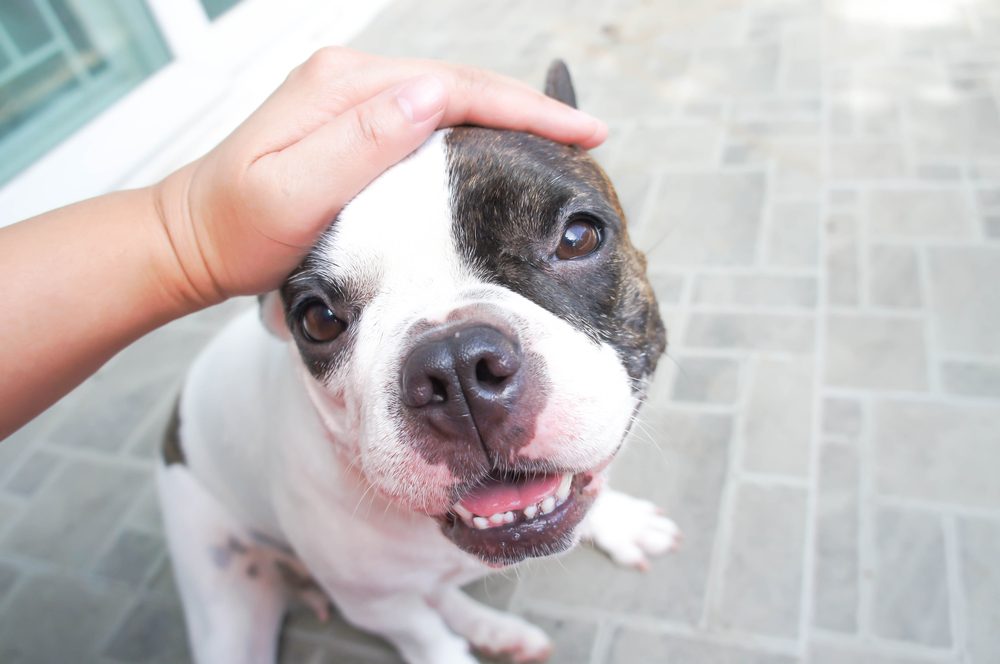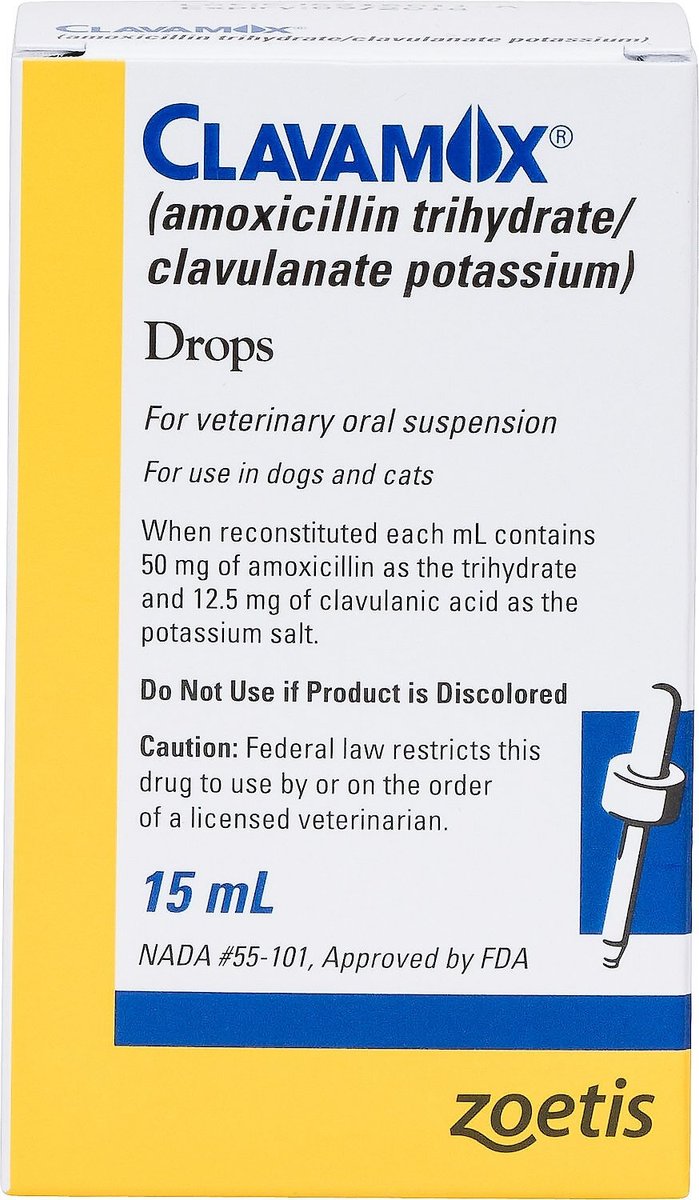Clavamox for Dogs: All You Need to Know About This Antibiotic

Table of Contents
If your dog has ever developed a bacterial infection, chances are the veterinarian may have prescribed Clavamox. In this article, we will talk about Clavamox for dogs.
As a dual formulation, Clavamox is a broad-spectrum and potentiated penicillin that is efficient against various Gram-positive, Gram-negative, aerobic, and anaerobic bacteria.
Before starting your dog on Clavamox, please start reading. We will briefly cover everything you need to know about Clavamox for dogs, including uses, benefits, risks, and doses.
Can I Give My Dog Clavamox?

Yes, you can give your dog Clavamox. Clavamox is potentiated penicillin developed explicitly for pets and is safe for use in all types of dogs, from the teacup Chihuahua to the giant Great Dane.
Clavamox is available in two forms – chewable tablets and drops. Your vet can help you choose the formulation that is best for your dog.
What is Clavamox Used to Treat in Dogs?
Clavamox is a broad-spectrum antibiotic used to treat a variety of bacterial infections caused by Gram-positive and Gram-negative, aerobic and anaerobic bacteria.
Clavamox is potentiated penicillin or, in other terms, a potent combo of amoxicillin trihydrate and clavulanate potassium (potassium salt of clavulanic acid). The two active ingredients are combined to overcome strains of bacteria that would otherwise be resistant.
Namely, amoxicillin trihydrate is a strong broad-spectrum semisynthetic antibiotic, but it is not resistant to β-lactamase enzymes. This is where the clavulanic acid as a lactamase inhibitor kicks in.
Benefits of Clavamox for Dogs
The different benefits of Clavamox in dogs are listed below. Clavamox’s broad spectrum of bactericidal activity makes the use of this drug widespread and efficient.
Clavamox for Dog Skin and Soft Tissue Infections. Clavamox is regularly prescribed for soft tissue infections of the skin, like wounds, abscesses, cellulitis, and dermatitis. It is also the antibiotic of choice for dogs with pyoderma caused by susceptible strains of the following organisms: Staphylococcus aureus, Streptococcus spp., and E. coli.
Clavamox for Periodontal Infections in Dogs. In addition to managing soft tissue infections, Clavamox is excellent for bone infections, especially inside the dog’s mouth. Amoxicillin and Clavulanic acid is the go-to antibiotic combination in most cases of canine periodontal disease. Studies show that both oral aerobic and anaerobic bacteria are susceptible to Clavamox.
Clavamox for Dog Urinary Tract Infections. UTI in dogs and cystitis are fairly common. The most common bacterial cause of UTIs is E.coli which is sensitive to Amoxicillin. Based on studies, amoxicillin is the antibiotic of choice for the treatment of both complicated and non-complicated urinary tract infections in dogs.
Clavamox for Canine Pneumonia. Amoxicillin and clavulanic acid are efficient against bacterial pneumonia and respiratory tract infections (sinusitis and bronchitis). Additionally, Clavamox is frequently used in first-time cases of aspiration pneumonia.
Clavamox for Canine Otitis. Otitis or ear infections in dogs are quite common – many dogs will develop otitis at some point in their life. Clavamox can be used to treat such infections.
Potential Side Effects and Risks of Clavamox for Dogs

Side effects are always a possibility when giving your dog a new medication or supplement. In the case of Clavamox, a sensitive dog may experience side effects such as:
- Loss of appetite
Another possible side effect is the development of allergy symptoms due to antibiotics. A dog experiencing an allergic reaction to Clavamox may exhibit facial swellings, hives, rashes, or in the worst-case scenario – trouble breathing.
The following situations and conditions are considered contraindications for Clavamox use:
- Allergic reactions to penicillins and cephalosporins
- Dogs receiving medications with known drug interactions
Clavamox Dosage for Dogs
The recommended dosage of Clavamox for dogs is universal and equal to 6.25 mg per lb of body weight twice a day. However, the length of the Clavamox therapy depends on the dog’s underlying condition (the maximum duration of treatment generally should not exceed 30 days).
For example, a dog with a skin abscess needs 5 to 7 days of treatment, while a dog with deep pyoderma is likely to require up to 21 days of Clavamox use. Dogs with urinary tract infections are somewhere in the middle and are often dosed for 10-14 days.
Clavamox is available for dogs in chewable tablets with four potencies:
- 62.5 mg – 50 mg of Amoxicillin and 12.5 mg of clavulanic acid
- 125 mg – 100 mg of Amoxicillin and 25 mg of clavulanic acid
- 250 mg – 200 mg of Amoxicillin and 50 mg of clavulanic acid
- 375 mg – 300 mg of Amoxicillin and 75 mg of clavulanic acid.
There is also a Clavamox oral suspension which contains 62.5 mg of medication(50 mg of Amoxicillin and 12.5 mg of clavulanic acid) per ml of liquid.
The Clavamox chewable tablets feature a dog-friendly pork-liver flavor and can be given as treats or mixed with food. The Clavamox oral suspension is more practical for small dogs in which tablet dosing is difficult, and for dogs clever at spotting doctored meals.
If you accidentally skip a dose, give it as soon as you remember. However, if close to the next dose, skip the missed dose completely and continue giving the Clavamox as scheduled.
How Long Does Clavamox Take to Work on Dogs?
Clavamox starts working only 1 to 2 hours after being administered to your dog. This is because both active ingredients diffuse quickly into body tissues and fluids (serum and urine), with the exception of brain and spinal fluid.
However, more often than not, it will take several days to achieve a visible improvement in your dog’s condition. If such improvement does not occur after 2-3 days of treatment, contact your veterinarian.
Clavamox for Dogs Usage Guidelines
Clavamox may interact and should not be used in conjunction with:
- Other types of antibiotics
- Cephalosporins
- Tetracycline
- Erythromycin
- Chloramphenicol
- Certain inflammation or pain medications
- Blood thinners (such as dipyridamole)
- Sulfinpyrazone and probenecid
- Pentoxifylline
It is also important to properly store the drug. Dr. Jamie Freyer says, “Clavamox is sensitive to light, so keep in a dark place and do not open tablets until it’s time to give a dose. Clavamox drops should be refrigerated and used within 10 days after reconstitution.”
As antibiotic resistance is taking the world by storm, many pet owners are looking into natural alternatives for antibiotics. Although there are certain human foods with antibiotic-like features (garlic, ginger, oregano, honey, echinacea), not all of them are safe for pets.
Even the ones that are dog-friendly are rarely strong enough to exert the same benefits as traditional antibiotics like Amoxicillin and Clavulanic acid.
Our Final Thoughts on Clavamox for Dogs

Here are the takeaway messages for safe and efficient Clavamox use in veterinary medicine:
- Always Complete the Course: Even if your pet is back to normal after a couple of days, always give the medication for the entire course. Discontinuation risks the bacteria mutating and developing resistance.
- Give the Medication Exactly as Prescribed: If the label says “twice a day,” then give it every 12 hours. Set an alert on your cell phone for 7 am and 7 pm so that your dog gets the medication at exactly the right time.
- Do NOT Handle Clavamox if You Suffer from Penicillin Allergy: Clavamox belongs to the penicillin family. If you are allergic, then tell your veterinarian so they can prescribe a different medication.
- Tell the Vet if There’s No Improvement: If there is no improvement after 2-3 days of treatment, let the vet know, and they may send a swab for culture to find which bacteria are present.
Also, keep in mind the data provided in this article is purely informative – it is not a substitute for visiting the veterinarian when your dog needs antibiotics.

















